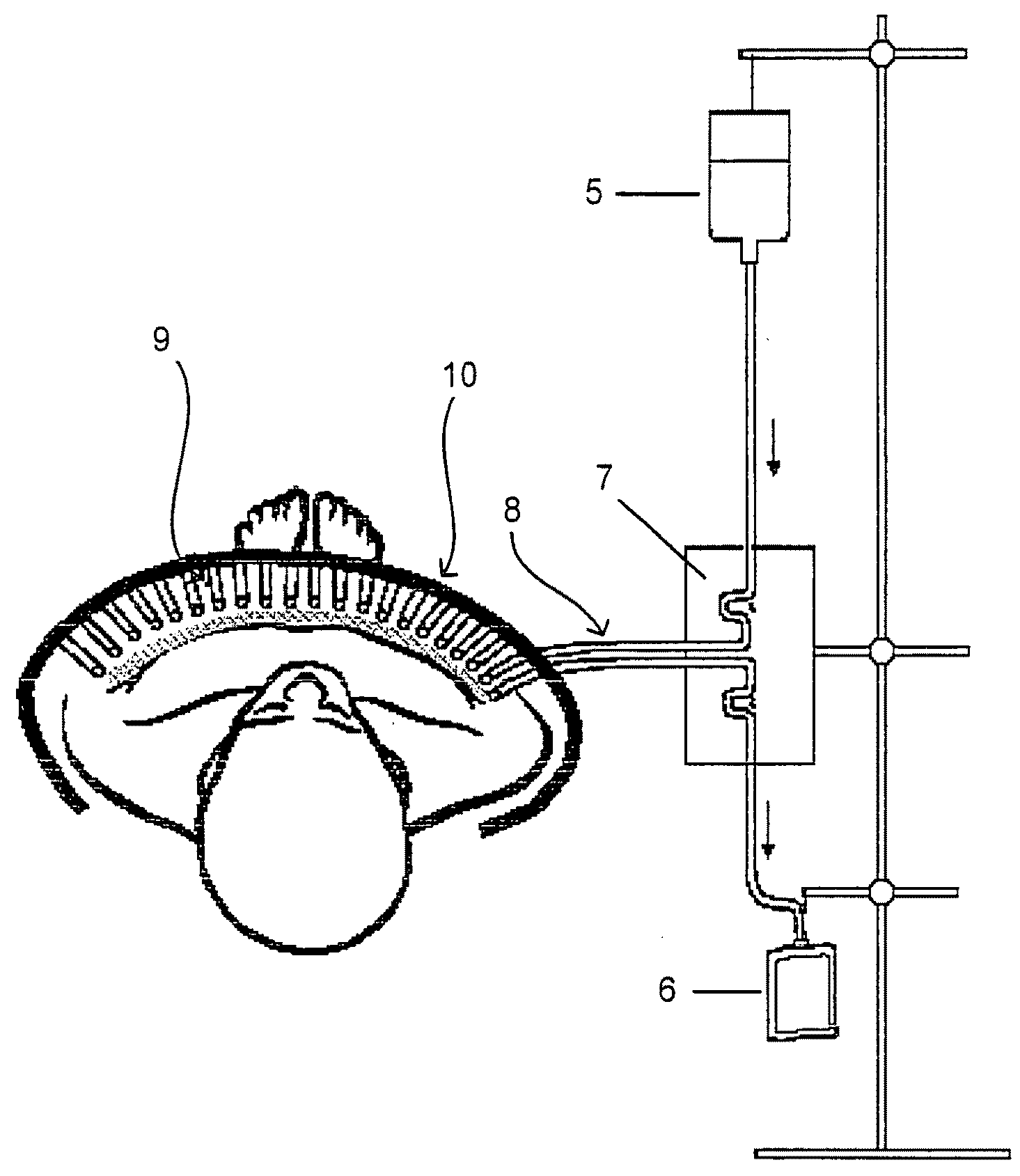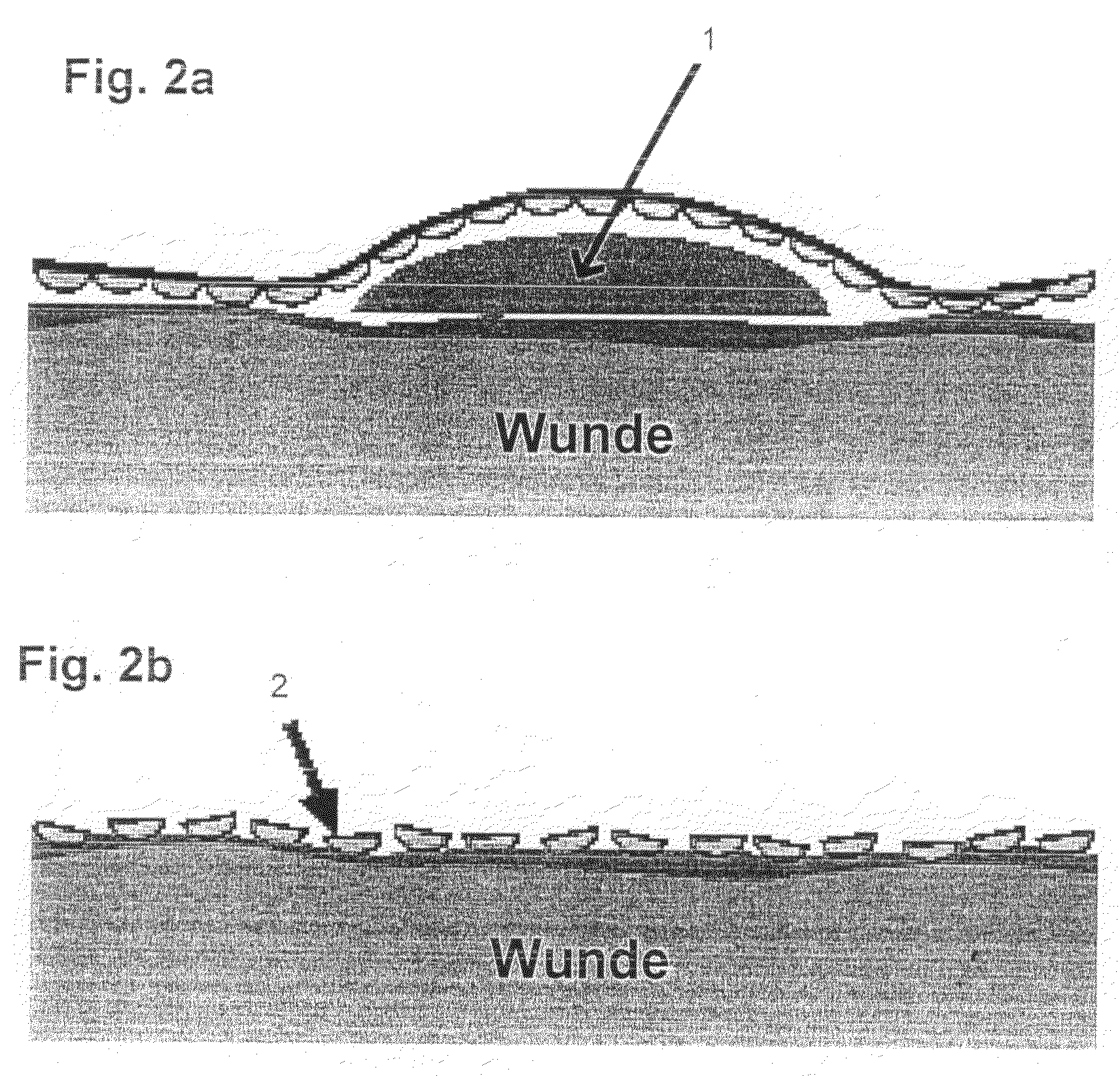Artificial "arterio-venous" permeable hollow fiber capillary system
a hollow fiber capillary system and arterial vein technology, applied in the field of active wound dressings, can solve the problems of acute skin wound treatment, clinically unsatisfactory, and not completely satisfactory clinical results, and achieve the effects of improving the mass exchange of wounds, facilitating drug-, mediator-, growth factor- and antibiotic/disinfectant perfusion, and moderate negative pressur
- Summary
- Abstract
- Description
- Claims
- Application Information
AI Technical Summary
Benefits of technology
Problems solved by technology
Method used
Image
Examples
example
[0044]Artificial capillaries were built—according to FIG. 4—in five versions: one in a 20×20 mm outer dimension “mat”, one in a 40×40 mm outer dimension “mat”, one in a 40×80 mm outer dimension “mat”, one in a 40×120 mm outer dimension “mat”, and one in a 200×400 mm outer dimension “mat”. In each mat, hollow fiber capillaries of less than one millimeter in outer diameter (medical grade microporous polyether sulfone plasmaseparation membranes, mPES, Akzo Membrana, Wuppertal, Germany) with a permeability limit for molecules of approximately 200,000 MW cut-of were arranged in parallel, with 5 capillaries per running 10 mmm of a “mat”. Thereby the 20×20 millimeter “mat”, e.g. contained 10 parallel arranged capillaries of 20 milimeter length each. All ends of fibers on one side of the mat were glued (Silastic, Dow Corning, USA) into 2 mm inner diameter silicone rubber tubes (Dow Corning, USA), where previously small holes were punched for each matching point. Each capillary and each tube...
PUM
| Property | Measurement | Unit |
|---|---|---|
| Length | aaaaa | aaaaa |
| Length | aaaaa | aaaaa |
| Length | aaaaa | aaaaa |
Abstract
Description
Claims
Application Information
 Login to View More
Login to View More - R&D
- Intellectual Property
- Life Sciences
- Materials
- Tech Scout
- Unparalleled Data Quality
- Higher Quality Content
- 60% Fewer Hallucinations
Browse by: Latest US Patents, China's latest patents, Technical Efficacy Thesaurus, Application Domain, Technology Topic, Popular Technical Reports.
© 2025 PatSnap. All rights reserved.Legal|Privacy policy|Modern Slavery Act Transparency Statement|Sitemap|About US| Contact US: help@patsnap.com



